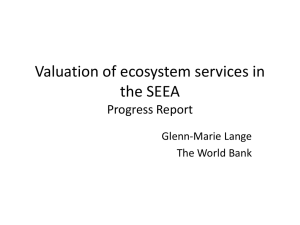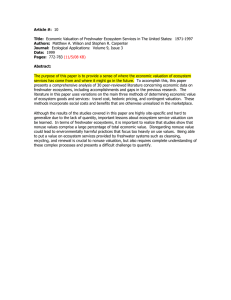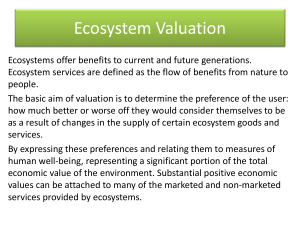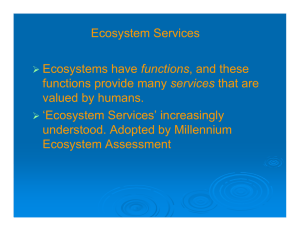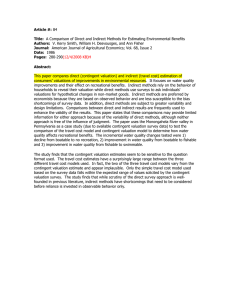Valuation Summary Table (DOCX
advertisement
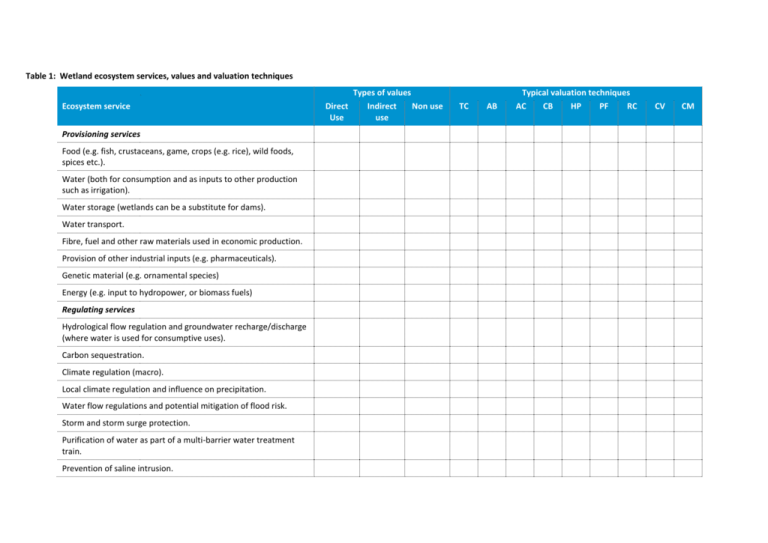
Table 1: Wetland ecosystem services, values and valuation techniques Types of values Ecosystem service Provisioning services Food (e.g. fish, crustaceans, game, crops (e.g. rice), wild foods, spices etc.). Water (both for consumption and as inputs to other production such as irrigation). Water storage (wetlands can be a substitute for dams). Water transport. Fibre, fuel and other raw materials used in economic production. Provision of other industrial inputs (e.g. pharmaceuticals). Genetic material (e.g. ornamental species) Energy (e.g. input to hydropower, or biomass fuels) Regulating services Hydrological flow regulation and groundwater recharge/discharge (where water is used for consumptive uses). Carbon sequestration. Climate regulation (macro). Local climate regulation and influence on precipitation. Water flow regulations and potential mitigation of flood risk. Storm and storm surge protection. Purification of water as part of a multi-barrier water treatment train. Prevention of saline intrusion. Direct Use Indirect use Typical valuation techniques Non use TC AB AC CB HP PF RC CV CM Types of values Ecosystem service Direct Use Indirect use Typical valuation techniques Non use TC AB AC CB HP PF RC CV CM Purification of air quality. Other waste decomposition and detoxification. Crop pollination through the provision of habitat for pollinators. Pest and disease control through the provision of filtering services and buffers etc. Supporting services Biodiversity. Nutrient dispersal and cycling. Soil formation. Seed dispersal. Habitat to support primary production. Cultural services Recreational opportunities. Provision of destinations for tourism. Aesthetic values translating into utility for visitors and changes in land values close to wetlands. Provision of cultural values. Provision of historical values. Source of intellectual and spiritual inspiration. Scientific discovery. Legend: TC = travel cost, AB = averting behaviour, AC = avoided cost, CB = contingent behaviour, HP = hedonic pricing, PF = production function, RC = replacement cost, CV = contingent valuation, CM = choice modelling. Source: MJA and MainStream analysis based on a review of literature. 2

